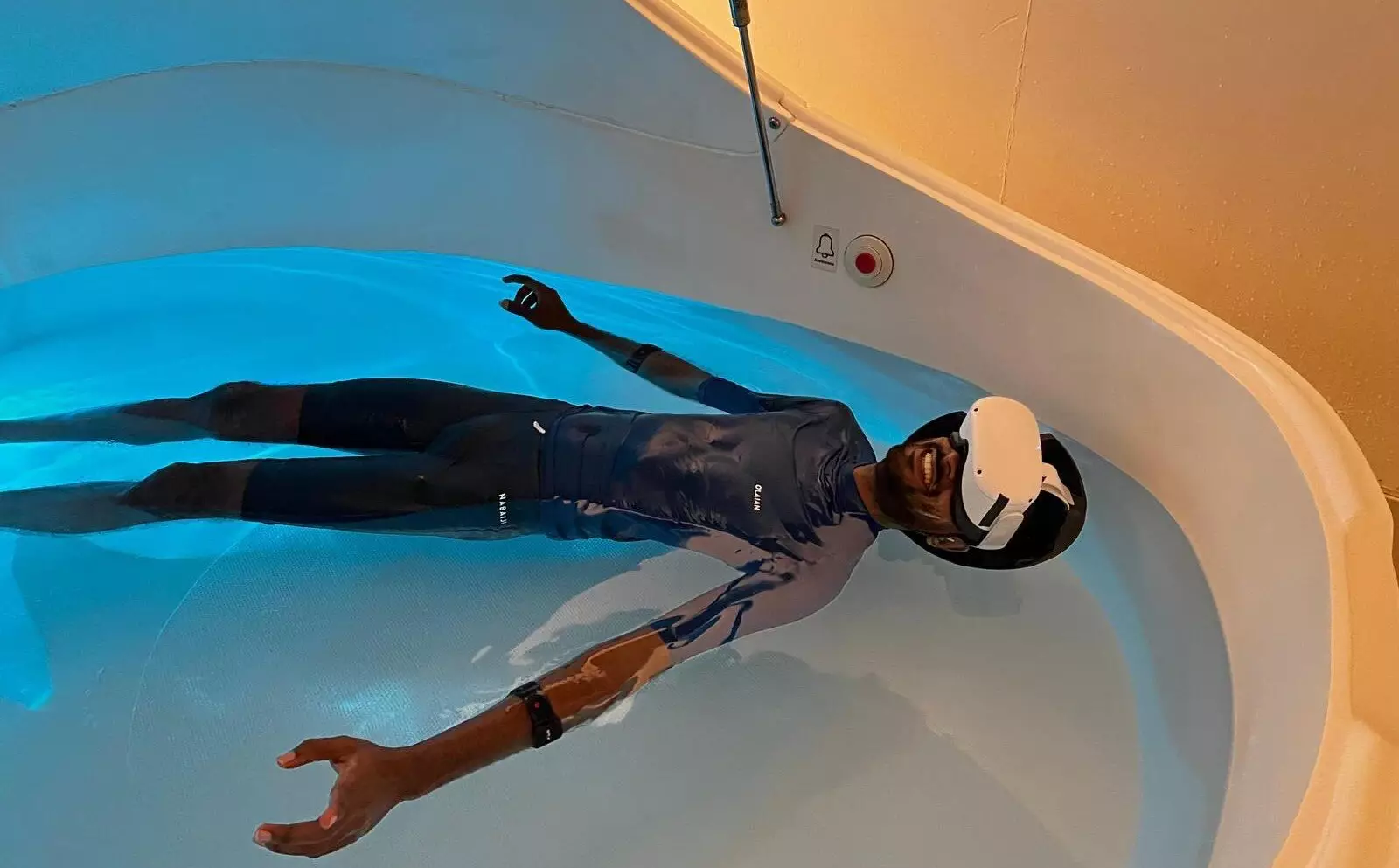Aquaphobia, a common and often debilitating fear of water, significantly impacts individuals’ ability to enjoy aquatic environments. This anxiety can prevent those suffering from it from partaking in activities like swimming, snorkeling, or even enjoying a beach day, leading to a cycle of avoidance and increases in distress. Traditional therapeutic methods, including cognitive-behavioral therapy and exposure therapy, have been utilized over the years to assist individuals in confronting their fears. However, the introduction of technology in behavioral interventions has unveiled new avenues, promising to redefine how we address such phobias.
Recently, researchers from Monash University’s Faculty of Information Technology, particularly within the Exertion Games Lab, have made remarkable strides in this area by unveiling a playful, water-inspired extended reality (XR) system. This innovative approach seeks to merge physical and virtual environments, utilizing a flotation tank that immerses participants in a controlled water setting while engaging them with a captivating virtual reality (VR) experience.
The structured study, published in the Proceedings of the CHI Conference on Human Factors in Computing Systems, took a unique approach to help overcome aquaphobia. By integrating sensory feedback—including heart rate, breathing patterns, and head movements—participants were engaged in a VR landscape that was both soothing and interactive. This kind of immersive engagement holds significant potential in not only alleviating anxiety but also in providing an enjoyable and accessible means for individuals to confront their fears.
The XR system designed by Monash researchers offers users a series of guided experiences within three distinct virtual water worlds, where they are accompanied by a comforting “water spirit.” This virtual character plays a crucial role in reassuring participants throughout their journey, promoting a sense of safety and encouraging engagement with the experience. Such interactive elements are instrumental in creating an environment where participants can gradually face and manage their fears without feeling overwhelmed.
As participants progress through the experience, they are encouraged to maintain their composure and control their heart rate, particularly as things become more intense, such as when navigating storms in the virtual world. This intricate design mimics efforts inherent in exposure therapies, where individuals are gradually exposed to their fears in a structured manner, equipped with consistent verbal support to help them stay calm and focused.
The study observed twelve participants who self-reported their fear of water, highlighting the method’s impact on various emotional metrics, notably anxiety levels. By documenting heart rate variability and employing feedback mechanisms throughout the immersive experience, the researchers were able to confirm a significant reduction in anxiety while participants engaged with the XR system compared to a baseline of floating in the tank without technology.
Maria Montoya, a lead researcher and Ph.D. candidate, emphasized the broader implications of their findings, noting that many individuals with aquaphobia miss out on enriching recreational opportunities. The researchers’ belief in interactive systems as mechanisms for fun and engaging exposure highlights a modernized approach to phobia management that is more accessible and less daunting than traditional techniques.
The implications of this research extend beyond just water-related phobias. As augmented and virtual reality technologies continue to evolve and become more integrated within therapeutic settings, we could witness a paradigm shift in how various phobias and anxieties are effectively addressed. Enhanced by real-time feedback and interactive capabilities, XR systems possess the potential to provide a more personalized therapeutic experience.
Ultimately, Monash University’s exploration of using an XR system in conjunction with flotation tanks stands as a pivotal example of marrying technology with healthcare. This innovative work not only addresses acute psychological challenges associated with aquaphobia but also paves the way for future developments in how we approach fear-based disorders. As researchers and technologists continue to work together, we can hope for a future where such fears become increasingly manageable, making recreational enjoyment of what water may hold a reality for many individuals.


Leave a Reply